Ones and Zeros Add Up To Big Numbers

There is little debate that the television business is a digital business now. The 80-year-old industry’s shift from antennas to apps has been under way for the last several years, but at this point, if we were to publish a list of Analog All-Stars, it might not fill a single page. So as we undertook the process of arriving at our sixth annual Digital All- Stars roster, we decided to specify the areas in which these pros ply their trade, encompassing advertising, distribution, local stations, marketing, news, programming, syndication and technology. It’s a comprehensive list for a comprehensively digital age. And yet, our honorees’ backgrounds are wide-ranging. Some come directly from the tech world, but many of them simply found smart ways of harnessing the efficiency and multiplier effect of digital tools. In a sense, that versatility is what television has always been about.
ADVERTISING
DAVE MORGAN
CEO, Simulmedia

When hiring at Simulmedia, Dave Morgan looks for people who want to change a marketplace.
That’s what Morgan, the 51-year-old CEO and founder of Simulmedia, is striving to do at his digital TV advertising company, a key player in the burgeoning programmatic market.
“We’re bringing a digital sensibility to the power of TV advertising,” Morgan says. “When brand advertisers are buying a campaign, we’ll not only deliver the media they’re purchasing, we’ll guarantee the results on what the outcomes will be. That’s not something anyone else has done.”
There is no dispute that ads on TV cause people to buy things, Morgan says. But what Simulmedia has done is link TV impressions to sales impact—on a large scale—and then optimize. Simulmedia fuses anonymous set-top box viewing data with real transactions, meaning it can look at ad viewing in tens of millions of homes and compare purchase behavior of homes that saw specifi c ads vs. those that didn’t.
Broadcasting & Cable Newsletter
The smarter way to stay on top of broadcasting and cable industry. Sign up below
The results are coming in, big and fast. Simulmedia delivered 20% more return on investment for Choice Hotels than their other TV expenditures during the second and third quarters of last year. And in its more than half a dozen campaigns throughout 2014, UFC’s return on investment was 571%.
“No one ever bothered to put TV under the microscope because they knew it worked intuitively,” Morgan says. “We’re finding you can bring digital targeting and digital accountability and outcome-based reporting to TV and really put TV on digital steroids.”
Morgan says Simulmedia’s goals for 2015 are to at least double the number of advertisers they work with and to double the business they are doing with each advertiser.
Digital is not going to overrun TV, Morgan says. Still, with Simulmedia’s success, the marketplace sure looks to be changing.
–Jonathan Kuperberg
SHELBY SAVILLE
Executive VP, managing director, Spark
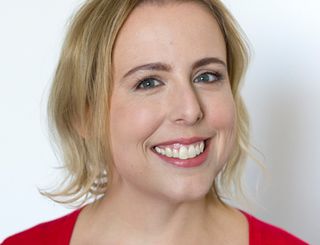
A digital approach is generating business for Shelby Saville.
Last year, food giant Conagra, which had been one of Spark’s digital clients, gave the agency its entire account.
“That allows us to really look at that client and take a digital mindset to a business that needs to find that competitive advantage. You want to do that across everything,” says Saville.
To Saville, who came up on the traditional side of the business, that digital mindset means thinking about how data affects how you look at TV. It means precision. It means content. And it means bringing all those things together. “We’re getting to a point where the lines are so gray that I can’t say there’s a point where digital stops and starts anymore,” she says.
Another client that recently hired Spark for both its traditional and digital business is Nickelodeon, which is dealing with the daunting challenge of keeping kids hooked to a television brand when they’re able to view what they want, when they want on a dizzying array of platforms and devices. Nick itself is coming out with a new over-the-top premium subscription product designed to reach kids and families.
“What’s great about Nickelodeon is they’re very smart in how they create content and they’re very smart in how they think about distributing that,” she says. Working with a media brand like Nick means figuring out more than ad campaigns. “What is the future of connectivity between kids and family going to look like? That’s going to be very different in a few years. How do we understand that now is a very cool challenge,” she says.
For Saville the next big thing is understanding the connection between content and brands. “Brands can be content creators,” she says. “We can create content that’s valuable to consumers and gives them something to interact with.”
–Jon Lafayette
SCOTT SCHILLER
Executive VP, digital advertising sales, NBCUniversal
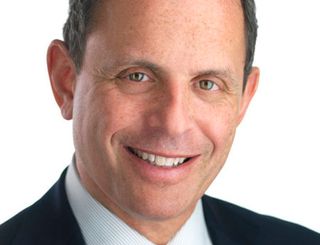
Scott Schiller likes being there when new things are created. Long before he got his current job at NBCUniversal, Schiller was at MTV Networks when cable was in only 20 million homes. And he moved to Prodigy before digital was digital. Back then, it was an online service.
“I always believed that if consumers adopt something, media and advertisers follow,” Schiller says. “What I like about the newer media is that they require a higher level of collaboration, but you have to be a doer to be successful.”
NBCU is no startup. Its entertainment, news and sports brands generate more than 100 million unique visitors monthly. Under Schiller, last year about 75% of its digital ad business moved in the upfront, alongside TV.
Schiller is particularly psyched about NBCU’s Social Synch product that used data to extend advertisers’ social media campaigns across multiple platforms. He says several clients have used Social Synch in successful campaigns. Mazda scored more donations to its “Drive for Good” campaign. Audi created custom content in connection with its Emmy sponsorship and distributed that content via social media. And the Target campaign with the Today show content was amplified socially with a #mykindofholiday hashtag.
“We believe strongly here in the connections of our content with the consumer and so the space that is intriguing advertisers most today is social,” he says.
Ask Schiller what’s next, and he says he’s looking forward to the day when there’s a single measurement language that spans digital and traditional media platforms. “Consumers already are multiplatform now, particularly millennials,” he says. “We as an industry have been chancing the need to have one common language since I’ve been in media.” After all, he says, “I think the entire media business is digital. It’s just a matter of how digital it is.”
–JL
BEN TATTA
President, Cablevision Media Sales

At Cablevision Media Sales, the charter is all about addressable advertising systems, implementing programmatic buys and the marketing power of understanding what millions of households want. But for Ben Tatta, the division’s president, the root of everything is making one-on-one connections with each subscriber. And the digital key that unlocks those connections and makes the buying and selling work is data—specifically, the census level audience data that Cablevision initiated in the last couple of years.
“Underneath the automation is this data, available on an almost real-time basis,” he says. “To me, that’s the fuel that gets us there.”
Cablevision has long been at the forefront of this kind of innovation, launching addressable advertising on a full-footprint basis five years ago, and as a constant champion of interactive TV. “As a result, we were able to take advantage of a lot of new technologies much earlier than others in the industry,” Tatta says.
Staff growth at CMS reflects this. The media research group has ballooned from six people to 35 in a couple of years, collecting and analyzing set-top box numbers, applying data for use in programmatic systems or for granular targeting and finding solutions meant to maximize ROI.
For Tatta, the professional evolution began in the late 1990s, when he ran USA Networks’ interactive division. “What was fascinating back then was being able to look at the online effect of television,” he says of the early days of studying the link between TV events and online traffic.
It helped forge his interest in what he sees as the current and future power of Cablevision’s audience-driven approach to TV advertising. “We’re now working on an API that will plug into most supply-side platforms. That’s the next phase for us, to port our supply side to any demand-side tool that a client or agency would want to use…the data connects all the advertising together.”
—Robert Edelstein
DISTRIBUTION
BOB BOWMAN
President of business and media, Major League Baseball
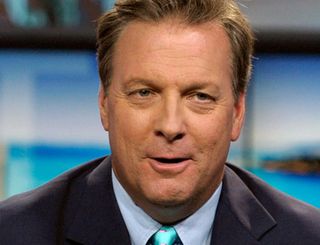
Under the guidance of Bob Bowman, Major League Baseball’s Advanced Media division has grown from what Bowman recalls as a “so-so” streaming service into a digital powerhouse.
Bowman, who joined MLB Advanced Media as CEO in 2000, sees the unit’s success as a gradual process. “The toughest thing about an Internet-based business is that it takes a while to be successful. While everything seems to happen instantaneously, a successful business does not,” he says.
Though under Bowman, MLB Advanced Media has become synonymous with streaming, it wasn’t always a priority. “We started streaming baseball games in 2002, and the reason why is because we could,” he says. “I’d be misleading if I said when I started here two years earlier my goal was to start streaming live games.”
Fast-forward to 2014, MLB Advanced Media’s suite of digital products, which includes streaming service MLB.tv and mobile app MLB.com At Bat, reeled in 3.5 million paid subscribers. At Bat was the highest grossing sports app for the sixth consecutive year in 2014.
The success of its streaming service has brought in a wide variety of clients—such as ESPN, WWE Network and HBO—in search of streaming technology.
Bowman attributes this success to getting in the streaming game early.
We’ve been at it a long time. We’ve made our mistakes in the proverbial ice age of streaming in 2002,” says Bowman. “I think we’ve also learned a lot from our clients. When you’ve got a client passionate about what they want to deliver, it makes you better.”
For Bowman, the key to his and MLB Advanced Media’s growth comes down to hard work.
“Nothing replaces hard work and perspiration. Inspiration is important, but perspiration is what gets the deal done.”
–Luke McCord
BJ ELIAS
Senior VP, distribution, Fox Networks Group
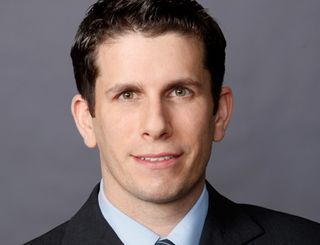
BJ Eliashas always been interested in the intersection of media and technology. He used a floppy disk to produce his grade school’s newsletter and brought his college newspaper online. Now he’s bringing Fox’s TV everywhere.
After stints at Yahoo, CBS and A+E Network, Elias joined Fox Networks in 2010 for the opportunity to work with some of the biggest brands, from the NFL to FX’s scripted series to Fox’s primetime slate.
Elias, 36, recently promoted to senior VP, distribution, says Fox has accomplished the three goals for TV Everywhere it had set out to do a couple of years ago: There is more content available, more MVPD partners and more screens.
The Chicago native pointed to “Simpsons World,” FX’s online portal that boasts more than 500 Simpsons episodes and other special features, as an example of detailed content for a certain audience. As to where audiences are watching content, Elias says that eventually it won’t matter to Fox and the industry as a whole.
“We are developing strong monetization models tailored for different screens,” he says. “That doesn’t mean replicating a traditional TV ad load—it means finding the right model for that screen.”
It also means finding people. Elias says it’s Fox’s job to bring its content to them, not wait for them to seek out Fox. As such, marketing products is among the goals for 2015.
“TV Everywhere is not about setting up destinations and reengineering human behavior in the hopes of attracting audiences, but rather setting up shop on the devices and platforms that people are already using,” he says.
While the concept of having TV literally everywhere might have been a “punch line” a few years ago, Elias says today Fox offers almost all its TV programming in most places.
“It is elevating the perception of our industry as a whole.”
–JK
ROGER LYNCH
CEO, Sling TV
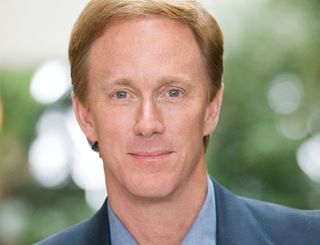
There was a time, in the late 1990s, when Roger Lynch’s ideas about broadband were looked upon as, in a word, alien. This is back when he was president and CEO of Chello Broadband N.V., a huge European ISP. “It was the beginning of broadband, when we had no subscribers, just the technology, and I remember saying to the senior executives of the cable company, ‘You realize that broadband is going to enable people someday to stream movies and television shows over the Internet.’ And they looked at me like I was from Mars.”
Clearly, the universe has gotten much smaller since then. A recent bit of proof comes in Sling TV, Dish’s $20 over-the-top video service, an anti-pay-TV option for millennials and cord-cutters that offers a handful of networks, including ESPN, in a much less restrictive and expensive pay model than traditional cable.
“[Dish] founder and chairman Charlie Ergen literally hired me to do this five years ago,” says Lynch, the Sling TV CEO and Dish’s executive VP of advanced technologies. The idea was to anticipate the slow decline in traditional pay-TV homes, and jump into the gap with a new technology in order to evolve a next-generation TV service and “get out ahead of it.”
The initial reaction to Sling TV at this year’s CES—after Dish CEO Joe Clayton literally banged the drum for the service—was promising, snaring the intended group of non-Dish subscribers. Some analysts question its long-term success, given its limits (it offers no broadcast networks) and the inevitable OTT competition, but the far-thinking Lynch likes its chances. “We’re not putting everything on Sling TV; we’re trying to do something different,” he says. “And there’s a natural segmentation that hasn’t really happened till now in the pay-TV market. The competitive reaction will lead to more segmentation, which is very good for consumers. My ideal scenario is we lead the way for that.”
—RE
SUSAN WOJCICKI
CEO, YouTube

Remember when YouTube started in 2005 and no one could figure out why people would want to share videos on the Web? And then even more befuddlement came when Google shelled out $1.65 billion for the service just one year later.
Today, however, more than 1 billion people regularly visit the site and 300 videos are uploaded every minute, according to the company. Forbes estimates YouTube is worth more than $20 billion, with some $6 billion in revenue.
Susan Wojcicki is charged with overseeing all of that as CEO of YouTube, a position she’s held for one year. But while she’s new to the company, she’s very familiar with it. Google employee No. 16—who famously rented out her garage to Google founders Sergey Brin and Larry Page to start the company in 1998—was an early champion of YouTube, and helped pushed through Google’s 2006 acquisition of the site.
Her mandate is to move YouTube from a site of self-created stars shooting zany videos in their living rooms to one that competes with the broadcast and cable networks for ad dollars. Part of that strategy is to create content strata amongst the videos that live on the site, with higher quality video garnering higher ad rates.
If anyone can move YouTube into a new more profitable, more premium era, it’s Wojcicki.
Wojcicki previously was Google senior VP of advertising and commerce. In that role, she oversaw the design and engineering of such services as AdWords, AdSense, DoubleClick and Google Analytics, and helped build the search engine into the advertising giant it has become.
Prior to joining Google, Wojcicki worked at Intel, Bain & Company, and a number of start-ups. She graduated with honors from Harvard University and holds a master’s degree in economics from The University of California at Santa Cruz and an MBA from UCLA. She’s also married and the mother of five children, the last of whom just arrived in December.
—Paige Albiniak
LOCAL STATIONS
MARK AITKEN
VP, advanced technology, Sinclair Broadcasting
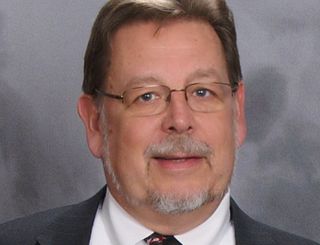
Mark Aitken's official title is VP of advanced technology, but he’s got some unofficial ones too. He’s the futurist at Sinclair Broadcast Group, tasked with seeing what’s up ahead in terms of how consumers use technology, and he’s an evangelist as well—a word he hears frequently for his deep belief that broadcasting should mean more than television.
“I don’t mind being called an evangelist,” he says. “If you want to share your joyful view of the future, you have to be an evangelist.”
Aitken’s office is next to Sinclair president/CEO David Smith’s, and serves as the Sinclair war room. The broadcast veterans spitball all sorts of ideas related to technology and how broadcast’s place in the media world might change—what Aitken describes as “a whole slew of what-if scenarios.”
Aitken, 59, has worked alongside Smith for decades, and is a key sounding board for the forward-thinking broadcast chief. “David expects me to be his crystal ball,” quips Aitken.
Aitken envisions a world where local station content is on every mobile device, and the station group is a key player in mobile distribution, giving it more direct engagement with users. “We want to be the other wireless carrier,” he says.
Aitken is Sinclair’s point man on ONE Media, which is designing an alternative to the ATSC 3.0 standard. He says the “Next Generation Broadcast Platform” will allow broadcasters to monetize spectrum while continuing their key roles in public safety, entertainment and commerce. “It’s an opportunity to play a much larger role in the communications infrastructure,” he says.
Many broadcast tech chiefs are simply trying to get their stations up to speed in the rapidly changing digital world. Aitken is looking further down the road. “I feel truly blessed to find myself in a job that affords me the opportunity to imagine what could be beyond the horizon,” he says, “and what our industry could be.”
–Michael Malone
ANNE SCHELLE
Managing Director, Pearl
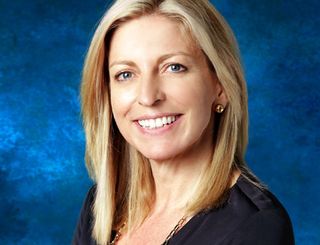
Anne Schelle, new managing director of the local broadcast consortium known as Pearl, has a massive job at hand. She’s in charge of figuring out a successful next generation broadcasting platform, and ensuring local TV content is as ubiquitous on mobile as it is on television. The former executive director of the Open Mobile Video Coalition (OMVC), she represents the interests of over 170 stations reaching two-thirds of the population, owned by blue chip groups such as Gannett, Hearst TV and Media General. With those groups amassing some $4 billion in annual revenue, “that gets interesting,” she says.
Schelle is focused on helping create the next-gen standard, promoting automated buying and selling of advertising time, and developing over-the-top viewing options. Last spring, the group announced “smart TV” trials in Orlando, Fla.; Atlanta; and Cleveland, with nine stations testing interactive technology. That means a more customized viewer experience, such as personalized traffic information, polling within news content, and a two-way channel on the ad front, such as viewers requesting a coupon after watching a relevant spot. Automatic content recognition (ACR) means the smart set knows exactly what’s been watched, and can serve up content accordingly.
“It’s true interactivity—we’re excited about that,” says Schelle. “There are huge opportunities around content and marketing.”
Schelle, 52, comes from the wireless world and brings rich experience in operations, marketing and the regulatory front. Pearl invested in the mobile TV initiative Dyle, which never caught on with the masses due in part to the challenge of getting the technology adopted by phone manufacturers. But Schelle is addressing that. Pearl has invested in the tech incubator Sprockit to have the innovators, she says, “develop to broadcast.”
Local news remains relevant to young consumers, she says. “If you give it to them in the form they want,” says Schelle, “they will access it.”
–MM
MARKETING
JULIET CORSINITA
VP of media & brand partnerships, Taco Bell

For Juliet Corsinita, there is no rest when it comes to connecting with consumers.
“We’re always on a quest to learn,” says Corsinita. “I think we’re learning that we don’t have all the answers and no one really does. So you have to keep your ears open.
“That’s a challenge Corsinita is more than ready to embrace. “You have to understand the changes in technology and how it’s causing consumers to adjust the way they’re engaging with different types of media… It’s exciting.”
That desire to learn and adapt was on display during the inaugural College Football Playoff.
“When you think about college football you really think about the passion and emotion of the fan, and the strongest emotion is really with that college fan.”
Taco Bell tapped into that passion by creating the Live Más Student Section, which provided students 3,000 seats for the semifinal and championship games.
Fans entered to win tickets by sharing photos of themselves in full game day attire on Twitter and Instagram with the hashtag #livemasfans. A select group was chosen to go to the games, where they continued to share their experience through photos.
The digital promotion was paired with on-air TV spots that ran a few weeks prior to generate awareness of the program.
“I think we’ve been most successful when the behavior already exists, and we go meet those fans where they already exist.”
Seeking new ways to connect with fans has propelled digital campaigns led by Corsinita—including with MTV’s Video Music Awards and Conan.
“She’s always looking for the cutting edge to give Taco Bell an edge over the competition,” says Jeff Lucas, head of sales, music and entertainment, Viacom Media Networks. “Her use of digital is so forward looking, so we go to her when we’ve got something new.”
–LM
GEETANJALI DHILLON
VP, marketing and digital media, Sony Pictures Television

Sony Pictures Television's Geetanjali Dhillon says she has three kids at the offi ce: Sony Movie Channel, Cine Sony Television and getTV.
Dhillon, who is VP of marketing and digital media for the three networks, manages her kids, which have very different demos across two languages, by looking at their individual needs.
“We’re tied to the bottom line,” says Dhillon. “So I look at everything through a business lens.”
GetTV, which launched a little over a year ago, has required the most attention lately and Dhillon and her team have worked hard to build the brand, especially through audience engagement on Facebook.
“It’s not just about what they’re doing [on Facebook] but I like to look at why they’re doing it,” says Dhillon of the net’s 50-something target demo. “Because why they’re doing [it] gives you an opportunity to…deliver something that’s meaningful and relevant.”
Dhillon started her career in civil rights and the non-profit sector. “I wanted to do something that impacted the way people live their lives,” says Dhillon. “I guess the other piece of that is I wanted to build something.”
She has been building ever since—first as an advisor to digital companies then as an exec at Jaman and as founder of the Republic of Brown Media Group. Dhillon jumped to Sony in 2012.
“For me, it was really rounding out my entire understanding of the entertainment ecosystem,” she says of her decision to join SPT. “Having the ability to understand what the entire ecosystem looks like helps you make smarter decisions.”
Data has played a big role in her decision-making at the company, allowing her to improve not only the performance of the three networks but also to help her partners.
“Data is fascinating,” she says. “It allows us incredible opportunities to get closer and more relevant and to deliver content that matters to our audiences.”
–Jessika Walsten
NEWS
BILL MARTENS
VP, general manager, CBSNews.com


NANCY LANE
Executive producer, CBSNews.com
The old adage holds that two heads are better than one. For CBSNews.com, that certainly proved to be true.
In the face of declining TV news viewership and new digital-only outlets that have usurped some of the old guard’s power, late last year CBS launched its over-the-top news channel CBSN, the first interactive streaming news network.
And no two executives had a bigger hand in the development of CBSN then Bill Martens, VP and general manager for CBSNews.com, and Nancy Lane, who serves as the executive producer for CBSNews.com. Martens leads the product side for CBSN while Lane handles the content development.
“We thought we saw where the future was going in terms of mobile and people wanted to get access to their news in a different way,” says Lane about the development of CBSN. “But it didn’t exist.”
Lane said her, Martens, CBS News president David Rhodes and Marc DeBevoise , executive VP and general manager of CBS Interactive’s Entertainment, News and Sports division would meet regularly about finding a way to get their content out there digitally. “From the day I arrived at CBS I’ve been having talks with David Rhodes about the need to create something in a streaming way that contained our editorial content.”
The early numbers for CBSN are promising. CBS News was the top ranked news channel on Roku following the launch, topping news outlets on the service in hours streamed for November and December.
Martens explained that while usage is spread out across all platforms (TV, mobile, online, tablet), the highest amount of user engagement comes on smart TVs. “We’re right on track with where we projected the numbers to be,” says Martens. “By launching simultaneously on the various platforms that we did we were really able to maximize that opportunity.”
–Tim Baysinger
ALEX WELLEN
Chief Product Officer, CNN

CNN's first ever chief product officer looks to further whet viewers’ digital appetites.
Being a 24/7 news network means there is a lot of content available to viewers to consume. The digital revolution means there are more platforms than ever to put this content on.
For CNN’s chief product officer Alex Wellen, the trick was finding a middle ground. “People wanted to control what they watch, when they watch and where they watch it,” according to Wellen.
Wellen is largely credited with being the mastermind behind CNN’s TV Everywhere offering CNNgo, which has received rave reviews. Wellen says when they were coming up with the product, they wanted it be more than simply a carbon copy of the linear news network.
“CNNgo was about atomizing and annotating content,” he says. “It was about breaking down all of our shows into their core segments.”
While the CNNgo launch has been successful, Wellen understands that there is still more to be done in whetting the digital appetites of viewers. “There is a space that lives somewhere between live and on demand where people want to know what just happened and what’s about to happen,” says Wellen. “I think we can create experiences that accommodate that.”
Wellen has been in his new role as chief product officer since late last year. He says this role is a reflection of CNN’s goal to not only create their own content, but be able to disseminate it themselves, something Wellen feels is all too rare among competitors.
“In a lot of places you’re either making the containers and filling it up with somebody else’s content or you’re creating content and putting it into somebody else’s container.”
—TB
PROGRAMMING
CINDY HOLLAND
VP, original content, Netflix

Cindy Holland has seen a lot in her 13 years at Netflix—Emmys for original series House of Cards and Orange is the New Black, the near- Ragnarök of Qwikster. And she has seen the company achieve the goals laid out for her by CEO Reed Hastings when she joined up.
“He explained to me that we were going to build a large, online DVD delivery service, then we were going to migrate that subscriber base to electronic delivery when it made sense,” Holland says. “Then we would go global from there.”
That’s just what Netflix did, and the company’s investment in original series has become a major recent component of its evolution. In January at NATPE, Netflix chief creative officer Ted Sarandos declared that the service could stream “around 20 original scripted shows a year.” Holland expects Netflix to reach that volume by 2017. As VP of original content—having started in DVD acquisition before overseeing domestic licensing for the company—she will be largely responsible for getting the service there.
Netflix’s pipeline includes comedy and NBC refugee Unbreakable Kimmy Schmidt, family drama Bloodline, and Marvel series Daredevil, among many others. It will not likely include reality programming any time soon. Asked about unscripted, Holland points to forthcoming documentary series such as Chef’s Table.
“That’s more the type of thing from us that you would see in unscripted, rather than a straight-up reality show,” she says. The network will also, in 2016, premiere a talk show starring Chelsea Handler. “Everything is under discussion,” regarding the show’s format and how episodes will be released. “But I don’t expect that we will have any kind of live strategy,” she adds. “That’s not our business model.”
–Daniel Holloway
ROY PRICE
VP, Amazon Studios

When Amazon Studios' Transparent won two Golden Globe Awards in January The New York Times called it “a remarkable moment.” Variety wrote that “Amazon proved itself a major player in the television field” that night.
Amazon Studios VP Roy Price is more low-key about it.
“I think it’s very encouraging to get that kind of acknowledgement from the Globes,” Price says. “It brings the show to a larger audience.”
Price is low-key about a lot that others would shout about. Asked how he pulled off a deal to have Woody Allen create a series for Amazon, he says, “We met one time in New York, and we met a couple times thereafter, and it came together.”
The Allen deal was announced two days after Transparent’s Globes haul. That same week, Amazon posted its newest round of pilots online. (Allen’s straight-to-series order notwithstanding, Price says Amazon will continue to make pilots available for customers to view and post feedback on before green-lighting shows.) A week later, the company announced that it would begin producing feature films with the goal of premiering them on Amazon within 4-8 weeks of a theatrical release.
Price’s enthusiasm builds when talking about the movie venture. Independent films, he says, can benefit from shortened windows between theatrical premiere and home viewing. Hardcore fans will get a theater experience. The buzz they generate will trickle down to Amazon subscribers. And filmmakers will get to see their movies play on big screens, then be exposed to larger streaming audiences. Never mind that theatrical fi lm is, as Jeffrey Katzenberg said nearly a year ago, “not a growth business,” or that theater chains refuse to accommodate windows shorter than 90 days.
“I think we’ll be able to figure out something that will really work for everybody,” Price says. Then, with some swagger in his voice, he adds. “So stay tuned.”
–Daniel Holloway
SYNDICATION
TRISTAN ZIMMERMAN
Senior digital producer, The Wendy Williams Show

Tristan Zimmerman was running the website for Warner Bros.’ The Tyra Banks Show when he saw the test for Debmar-Mercury’s Wendy Williams in the summer of 2008. Immediately, he was hooked.
“I knew from the second I saw the show that she had it,” he says. “She’s lightning in a bottle in my opinion, and she’s proven that.”
When the opportunity came for him to join the program, he jumped at it. “I didn’t see it as a big risk,” he says. “I always knew that she was going to be successful.”
Zimmerman oversees all things digital and social at Wendy Williams, which offers a bit of an extra challenge considering that Williams herself is not a digital native, or even a digital visitor.
“She’s never sent an email in her life,” he laughs. “She only knows how to text.”
But that’s OK with Zimmerman. He’s built Wendy into a social presence by capturing her doing what she does best: being herself. Every day, he and his assistant shoot a segment called “After Show” and post it on the Wendy Williams website. He also takes that day’s “Hot Topics” segment and posts it on Wendy’s YouTube channel, which had nearly 549,000 subscribers at presstime. The show’s other popular segments— “Ask Wendy” and “Hot Talk”—also get posted.
“I post ‘Hot Topics’ every night at 9 p.m. ET and if I’m even five minutes late, I’m getting a tweet from someone saying ‘Tristan, where’s ‘Hot Topics?’”
Zimmerman also populates Wendy’s Facebook page—which has 2.3 million followers—with questions that get her faithful fans talking, creating a loyal community.
Zimmerman came to Wendy Williams from Telepictures, Warner Bros.’ first-run production arm. While there, he was the lead Web producer for The Tyra Banks Show, where he increased the site’s daily uniques and page views by 30% in three months.
—PA
TECHNOLOGY
RALF JACOB
Chief Revenue Officer, Verizon Digital Media Services

Plenty of innovators arrive at the right place at the right time and cash in on the sale of their start-up companies. But only a fraction of those fortunate few stick around after the payday to help the acquirer get the most bang for their buck.
Ralf Jacob, chief revenue office at Verizon Digital Media Services, falls into the latter group. After successful stints at Deluxe and Move Networks as a developer of streaming video technology, he cofounded and served as CEO of upLynk. The company perfected a single adaptive, cloud-based format for streaming live and on-demand video to all devices. Founded in 2010, it was snapped up by Verizon in 2013, part of the addition of video assets that now comprise the company’s Digital Media Services unit.
One reason Verizon readily bought in was the pioneering work by Jacob and his team in developing the Watch ABC and Disney apps, the first to stream broadcast content to mobile devices. Their model has been followed across the industry.
“A lot of people have said we sold out too early but this was by no means a sellout,” says Jacob, who studied marketing and computer science at Germany’s Fachhochschule Wiesbaden. “We bootstrapped the company, and it was profitable from the get-go. Being part of Verizon enables us to deliver unique solutions to the marketplace.” (One such solution is something Jacob & Co. developed, a patented piece of streaming technology called The Slicer.)
Advanced talks are continuing with a range of networks about offerings comparable to Watch ABC, Jacob says. And numerous others are taking Verizon’s setup for a test drive.
After a three-year sprint with a team of nine, Jacob now leads about 120 employees, heading up sales in North America. “I used to be the entire sales force,” he says with a chuckle. “Now, we have a whole team to get people excited about what we’re doing.”
–Dade Hayes
DENNIS KISH
VP, Google Fiber

With the Federal Communications Commission planning a push to boost broadband speeds, the industry is getting a nudge from Google, which has been building blazing-fast 1GB broadband networks that are about 100 times faster than the average 11Mpbs residential speeds in the U.S.
Those efforts, which put Dennis Kish, the head of Google Fiber, on this year’s Digital All-Star list, began small, with the hugely overhyped launch of Google Fiber in Kansas City in 2012. But in February 2014, Google announced that it was considering building networks in nine new metro areas and in the summer of 2014, hiring seasoned tech and telco veteran Kish, as VP of Google Fiber to turn those expansion plans into reality.
This January Kish announced plans to bring Google Fiber to 18 cities in four metropolitan areas: Atlanta, Charlotte, Nashville and Raleigh- Durham, which have over 1 million homes. As Kish put it in a blog post, “Bringing Google Fiber to those cities is a long-term investment.”
Adding 1 million-plus passed homes still makes Google Fiber tiny compared to Comcast, which operates in communities with some 53 million homes and Time Warner Cable, which passes 30 million. But Google is also exploring plans in a number of other cities, including Phoenix; Portland, Ore.; Salt Lake City; San Jose, Calif.; and San Antonio, Texas, and Bernstein Research estimates the search giant is now spending some $630 million a year on the effort.
Even more notably, Google’s plans have pushed cable operators to speed up deployments of DOCSIS 3.1, which can offer gigabit connections, and prompted telcos AT&T and CenturyLink to begin their own gigabit investments, which could provide an infrastructure for more over-the-top services. As Kish stated in the recent press conference announcing a major expansion of Google Fiber, “We think the next chapter of the Web is going to be written on gigabit speeds.”
—George Winslow
SCOTT LEVINE
Senior VP, products, Univision

When Scott Levine joined Univision in 2012, he was looking at a digital team focused on building products instead of wowing its audience. Fast-forward to 2015. Levine, now senior VP of products for the Spanish-language broadcaster, says, “our question isn’t ‘What’s the schedule to build out this product?’ Our question is, ‘What are the areas that we’re going to blow people’s minds on?’”
In order to attempt this, Univision creates core designs for its technology products and then finds partners to help realize them. For last summer’s World Cup, video-tech firm NeuLion helped build the network’s digital offering—87% of whose traffic came from smartphones.
In relaunching UVideos, Univision’s TV Everywhere platform, earlier this year, Levine prioritized that on-the-go viewership. “What we did was optimize for mobile usage—It’s core to every single thing we do every single day,” he says. “Seventy-one percent of our digital audience accesses content exclusively on mobile devices.”
Using UVideos’ new user-focused design as a jumping-off point, Levine and his team are planning a complete update for all Univision digital properties, from Univision.com to its apps. The new mobile-centric setup will be cloud-based and offer built-in advertising to help brands “feel like a part of the experience,” says Levine.
“Stickier” ads will rise and fall with pages or be featured as part of streaming content.
While modernizing Univision’s properties, Levine says he’s making products for “the heartbeat of Hispanic America,” including English-speaking viewers, who made up over 25% of the World Cup digital viewership.
His job is to continuously check the pulse of that audience using metrics such as page views, unique viewership and engagement—which could be anything from comments, users finding content quickly or clicking through slide shows. Currently, all those numbers are on the rise for UVideos.
—Ariana Romero
JOHN HONEYCUTT
CTO, Discovery Communications

As more TV companies work to reinvent themselves for an IP world, being a digital all-star isn’t just about creating apps and websites or cutting the business deals to make content available. It also requires change in the technical infrastructures of broadcast and cable TV.
That imperative to change or die, has earned Discovery Communications CTO John Honeycutt a place among the 2015 B&C Digital All-Stars.
“The business people will handle the negotiations and determine what makes sense, but on my side, I know I can’t be a barrier,” says Honeycutt, who has become an outspoken proponent of IP and cloud-based technologies for transforming the way TV programmers operate. “Getting the content in a place where it is rapidly and readily accessible to those platforms is a key part of the strategy because the deals happen quickly and the first mover advantage is probably more important than ever.”
To that effort, Honeycutt brings a wealth of experience at Fox and Discovery that has already earned him a B&C Technology Leadership Award in 2009. As senior VP of broadcast operations for Fox Cable Networks in Los Angeles, Honeycutt played an important role in developing the technical infrastructure for the company’s regional sports networks. After joining Discovery Communications in 2003, he rose up to executive VP and chief media technology officer for Discovery Communications, where his tech teams streamlined workflows and laid the tech groundwork for much more flexible, efficient operations.
That success led to a new job in London in 2010 as executive VP and COO Discovery Networks International, where he played a key role in the company’s international expansion. “That experience sitting on the business side has made me a million percent better in understanding the business needs and the context for the technical infrastructure we need,” he says after he was named CTO in March of 2014.
–GW (For more on Honeycutt, see “Technology”.)
